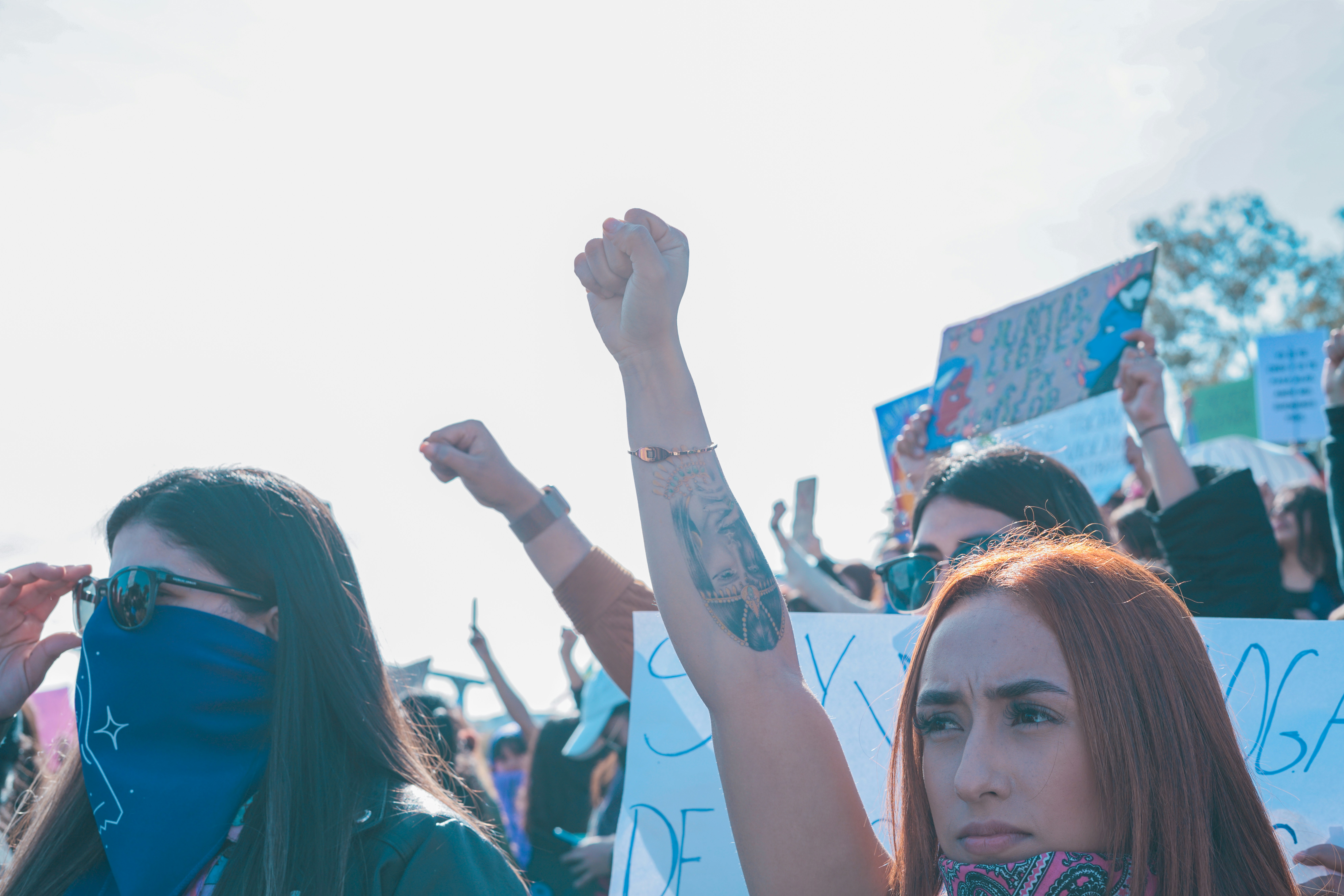
Introduction to the Anti-Trump Protests
In recent months, cities across the United States have witnessed a significant wave of anti-Trump protests, reflecting a growing discontent among various segments of the population. These demonstrations have not only marked a response to the policies and actions of the Trump administration but have also served as a platform for broader social justice issues. The protests are often characterized by the central theme of ‘hands off’, which signifies a collective demand for respect and protection for marginalized communities that feel threatened by government decisions.
The motivations behind these protests are multifaceted. Many participants express their dismay regarding immigration policies that they perceive as discriminatory and inhumane. The treatment of immigrants, particularly those from Latin America and Muslim-majority countries, has prompted strong reactions, leading to large gatherings organized to assert the rights and dignity of these groups. Additionally, issues related to race, gender, and climate policy have galvanized activists, creating a diverse coalition united by the call for change.
The anti-Trump protests have also emerged as a reaction to a perceived erosion of democratic norms and an increase in authoritarian rhetoric. Many protesters express fears about governmental overreach that they believe undermines fundamental civil liberties. From finance to healthcare, critics argue that Trump’s policies disproportionately favor privileged groups while sidelining the needs and voices of the marginalized. This has fueled a sense of urgency within the protest movement, with demonstrators striving to raise awareness and advocate for policies that align with democratic values.
The unified message that has resonated through these protests is one of solidarity against what protesters describe as an administration that fails to respect the rights and dignity of all individuals. As we delve deeper into the impact and outcomes of these demonstrations, it becomes clear that the anti-Trump protests are a significant expression of resistance within the current political landscape.
Historical Context of Anti-Trump Protests
Since the election of Donald Trump in November 2016, anti-Trump protests have become a defining feature of the American social and political landscape. This series of protests stems from a variety of concerns that encompass civil rights, social justice, and climate change issues, among others. The discontent manifested itself immediately following his election, with mass rallies occurring across major cities in the United States. Events such as the Women’s March on January 21, 2017, served as a powerful response, drawing millions to the streets to voice their opposition to Trump’s policies and administration.
As his presidency progressed, protests against Trump gained momentum and diversity. The response to his immigration policies—characterized by family separations at the border and efforts to ban certain nationalities from entering the U.S.—initiated a wave of demonstrations aimed at advocating for immigrant rights. Activist organizations mobilized large crowds to engage in protests, fortifying the sentiment of dissent among various communities. This phase was further amplified by movements such as the March for Our Lives, which emerged in response to gun violence and aimed to challenge the administration’s stance on gun control.
The evolving nature of these protests highlights a broader reaction to Trump’s stance on social issues and civic engagement. Across different states and communities, the protests have displayed solidarity, creating a network of grassroots activism aimed at advocating for equitable policies. Notably, historical parallels can be drawn with protests during previous presidential administrations, where public sentiment strongly opposed policies perceived as unjust or discriminatory. The protests not only highlight discontent but also serve as a reminder of the enduring struggle for civil rights, revealing an engaged populace committed to challenging the status quo.
Themes and Messages of the Protests
The anti-Trump protests that have emerged in cities across the United States are characterized by their diversity and the multifaceted nature of the concerns expressed by demonstrators. Each protest serves as a platform for various themes that resonate deeply within society, showcasing the collective frustration felt by many American citizens. Central to these protests are issues such as immigration rights, women’s rights, racial equality, and environmental challenges.
Immigration rights stand out as a salient theme, particularly in response to policy changes perceived to be discriminatory and damaging to immigrant communities. Protesters often carry signs peppered with messages promoting inclusion and human rights, emphasizing the idea that America is a nation of immigrants. Simultaneously, women’s rights have garnered significant attention. Many participants advocate for bodily autonomy and gender equality, standing firmly against policies they believe threaten these fundamental rights. The iconic slogans and banners serve not only as expressions of dissent but also as calls for solidarity among those who seek justice and equality.
Racial equality is another pivotal theme that has fueled the protests, emphasizing the ongoing struggle against systemic racism and advocating for equitable treatment for all individuals, regardless of their race. This message resonates particularly in light of recent events that have highlighted injustices within the legal and policing systems. Environmental issues also find a central place in the anti-Trump protests, with demonstrators voicing their concern over climate change policies that disregard scientific consensus. In this context, many chants and visual displays articulate a commitment to sustainability and ecological stewardship.
In summary, the themes and messages present in the anti-Trump protests reveal a rich tapestry of societal concerns, unified by the desire for change and justice. Through robust expressions of solidarity, demonstrators effectively communicate their demands and aspirations, amplifying their calls for a more inclusive and equitable society.
Significant Locations and Events
The anti-Trump protests have manifested dramatically across several prominent cities in the United States, each area contributing uniquely to the broader movement. New York City, often regarded as a cultural epicenter, has seen an array of rallies and marches. Notably, the Women’s March in January 2017 drew hundreds of thousands, signaling a strong opposition to then-President Trump’s policies. The varied demographics of New York’s protesters reflect a diverse coalition that continues to engage in activism, often resurrecting old grievances associated with civil rights and social justice.
Moving to the West Coast, Los Angeles has emerged as another hotbed for anti-Trump protests. The city is characterized by its vibrant immigrant communities, and many protests have specifically addressed issues such as immigration reform and racial equality. Events such as the “Not My President” rallies have brought together diverse groups committed to challenging Trump’s rhetoric and policies. The climate of activism in Los Angeles also emphasizes celebrity involvement, which can draw significant media attention, amplifying the anti-Trump message.
Washington D.C., the nation’s capital, serves as a critical backdrop for protests against Trump’s presidency. Demonstrations often occur just blocks away from the White House, spotlighting the protesters’ demands for accountability from the government. The March for Science and the climate change protests saw thousands gathering to express their discontent with Trump’s environmental policies. Such high-visibility events position D.C. as an epicenter where activists aim to influence policymakers directly. As these protests unfold, firsthand accounts reveal the fervor and determination of participants, strongly contributing to the narrative of dissent against Trump’s administration.
In conclusion, significant locations such as New York City, Los Angeles, and Washington D.C. have not only facilitated the proliferation of anti-Trump protests but have also creatively highlighted local issues. The collaboration among diverse groups within these cities enhances the overall impact of the national anti-Trump movement.
The Role of Social Media and Technology
The emergence of social media platforms has transformed the landscape of activism, particularly in the context of the anti-Trump protests. These digital tools have provided activists with a vital means to organize, mobilize, and amplify their messages, streamlining communication and enhancing engagement among supporters. Platforms such as Twitter, Facebook, and Instagram have become crucial for disseminating information about protest events, offering real-time updates, and fostering a sense of community among participants. This digital connectivity has enabled organizers to overcome traditional barriers to mobilization, reaching a wider audience that might not have been accessible through conventional methods.
As protests unfolded across various cities in the United States, hashtags emerged as powerful symbols of resistance, unifying participants under common themes such as #Resist or #NotMyPresident. The use of these hashtags served not only to raise awareness but also to aggregate content, allowing users to share personal experiences and insights related to the protests. This collective expression has created a rich tapestry of narratives that reflect the diverse motivations behind the demonstrations, thereby broadening public discourse about the implications of Trump’s presidency.
Moreover, online campaigns have played a significant role in shaping the protests. Organizations and individuals alike have leveraged social media to launch initiatives that promote awareness around specific issues related to the Trump administration, such as immigration policies or climate change. These campaigns often encourage people to participate in local protests or share their own stories, fostering a sense of solidarity among those who feel marginalized by current political decisions. The immediate nature of technology empowers activists to respond quickly to emerging events, ensuring that the ethos of the protests continues to evolve in real time, reinforcing the relevance of the anti-Trump sentiment throughout this ongoing movement.
Government Response and Law Enforcement
The anti-Trump protests that have erupted in various cities across the United States have drawn significant attention from both local and federal authorities. As demonstrators rally against policies perceived as unjust or discriminatory, the responses from governments and law enforcement agencies have varied widely, reflecting the unique political climate and the complexity of civil liberties in the nation.
In many instances, local law enforcement departments have adopted a strategy of minimal intervention during the protests, which has garnered support from various civil rights groups. This approach tends to prioritize the safety and rights of the protesters, allowing them to express their dissent against the Trump administration without undue suppression. There have been occasions, however, where clashes between police and demonstrators have led to the use of crowd-control measures, raising concerns about the balancing act between maintaining public order and respecting the right to protest.
Federal responses have also played a crucial role in shaping the atmosphere surrounding these protests. The deployment of federal agents in response to anti-Trump protests, particularly in cities experiencing significant unrest, has triggered debates about the role of the federal government in local matters. Critics argue that such actions may infringe upon the constitutional rights of protesters, while some officials maintain that these measures are necessary to uphold law and order during volatile situations.
Contradictions in governmental policies have emerged as well, with some political figures expressing their support for peaceful protest while simultaneously advocating for measures that may curtail protesters’ rights. This contradiction raises significant questions about how far the government should go in upholding civil liberties amid heightened social tensions. It underscores the critical need for a consistent approach that respects the constitutional right to free expression, particularly in a politically charged environment marked by the ongoing anti-Trump protests.
Voices from the Ground: Interviews and Testimonials
The ongoing anti-Trump protests across the United States continue to resonate with a diverse array of individuals, each bringing unique perspectives and motivations that reflect their personal stakes in the current political climate. Interviews with participants offer insight into the reasons behind their involvement and the emotional undercurrents driving these movements. These testimonials highlight the urgency felt by many in confronting policies and actions associated with the Trump administration.
One protester, a young activist from New York City, articulated her feelings regarding the need for a clear message against what she perceives as harmful policies. “I am here because I believe in equality and justice for all. The trump protests are not just about one man; they represent a larger fight for civil rights.” Her words resonate with many who feel that Trump’s governance negatively impacts vulnerable communities.
Another participant, a father from Chicago, shared his fears for his children’s future. “I want my kids to grow up in a country that values kindness and inclusivity. These anti-Trump protests are our way of saying that we won’t stand by as these values are eroded.” His testimony underscores how the protests serve as a family-oriented initiative, showcasing deep-rooted concerns about the implications of current political discourse.
Additionally, a retired teacher from San Francisco expressed her discontent with educational policy changes enacted under the Trump administration. She stated, “I have dedicated my life to teaching and nurturing future generations. The rollback of educational funding is something I cannot ignore.” Her commitment exemplifies the dedication of countless educators participating in protests aimed at securing the rights of students and teachers alike.
These voices, among many others, illustrate the passionate and emotional nature of the protests, forming a united front against perceived threats to democracy. Through their stories, participants emphasize the significance of collective action and the need for accountability in governance. In conclusion, the anti-Trump protests create a vital space where individuals can voice their concerns and advocate for the changes they wish to see in society.
Impact of Protests on Public Opinion and Policy
The ongoing anti-Trump protests have emerged as a significant societal movement, reflecting the deepening divisions within the United States regarding the Trump administration’s policies and actions. As these protests gain traction across various cities, their influence extends beyond mere demonstrations; they play a crucial role in shaping public opinion and potentially guiding policy decisions. Polling data indicates a marked shift in sentiment among the electorate in response to these collective protests. Many surveys suggest that public discontent with Trump’s administration has intensified as individuals express their frustrations over issues such as immigration, health care, and racial injustices through organized protests.
Media coverage of these anti-Trump protests also amplifies their impact on public opinion. News outlets highlight the voices of protesters and their grievances, which can catalyze discussions on critical social topics. This coverage often correlates with shifts in voter perceptions, as citizens become increasingly aware of the collective discontent voiced by their peers. Social media platforms further propagate these sentiments, enabling protesters to share their messages widely, rally support, and mobilize others who may feel marginalized or unheard.
The repercussions of these protests extend into the political realm. As public opinion shifts, lawmakers may feel compelled to respond to the increasing demand for change. Elected officials might find their positions challenged, leading them to reconsider their stances on key issues addressed during these protests. Moreover, upcoming elections could be influenced significantly as demonstrators continue to voice their opposition to Trump’s policies, potentially impacting voter turnout and candidate selection. In conclusion, the widespread anti-Trump protests serve not only as a manifestation of public dissent but also as a powerful catalyst for transforming public discourse and influencing policy direction in the American political landscape.
Future of the Anti-Trump Movement
The landscape of American protests has been profoundly shaped by the emergence of anti-Trump sentiments across the nation. As we look towards the future of the anti-Trump movement, it becomes imperative to consider the sustainability of these protests and the potential for a unified front among various activist groups. Historically, movements that thrive are those that can adapt to changing political climates while maintaining momentum. The anti-Trump protests, which have galvanized vast numbers of individuals, present an opportunity for ongoing engagement in activism.
A pivotal factor in the future trajectory of the anti-Trump protests will be the degree to which diverse groups can coalesce around shared goals. Various factions, each with distinct agendas, have participated in the broader protests against the former president’s policies and rhetoric. For these movements to gain traction, it is essential that leaders and participants prioritize collaboration over division. Mutual respect and a common cause can foster solidarity, reinforcing the message of the protests and amplifying individual voices. Only through unity can these groups collectively impact the political discourse in the long term.
As the political landscape evolves, the next phase of collective action may be influenced by emerging issues and societal challenges. The anti-Trump protests have already highlighted various concerns, ranging from civil rights to environmental protections. These themes will likely persist and evolve, urging activists to broaden their fight for justice beyond the immediate implications of Trump’s administration. Adaptability will be crucial. Innovations in protest techniques and tools for organization, particularly leveraging social media and digital networks, may reshape how protests mobilize participants and amplify their messages.
In conclusion, the future of anti-Trump protests hinges on sustainable efforts and the ability to unify disparate activist groups. As participants adapt to changing political realities while focusing on common objectives, they will define what the next phase of collective action looks like in response to the ongoing political discourse.







